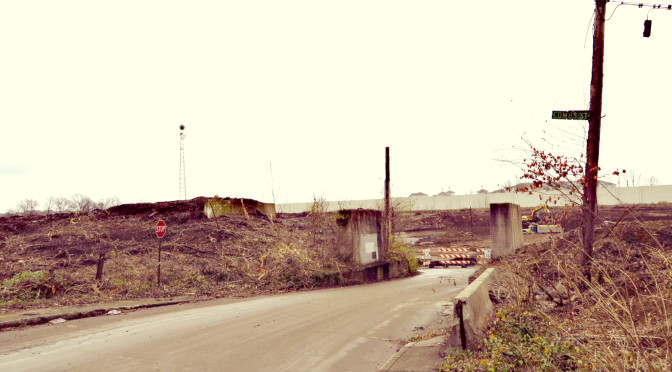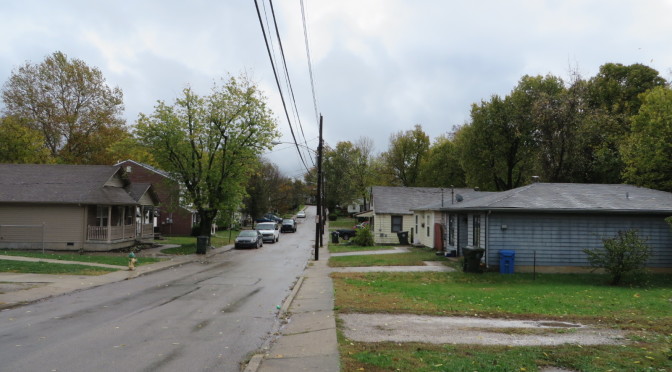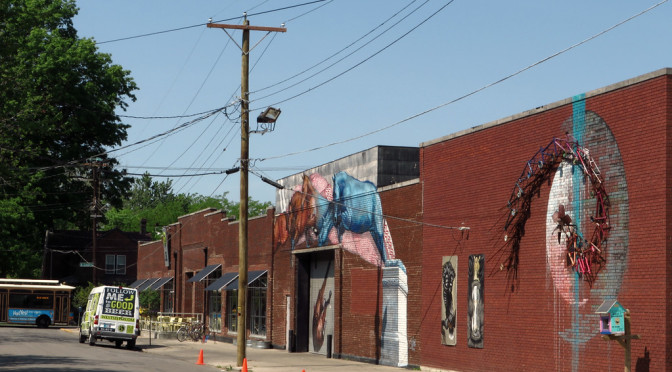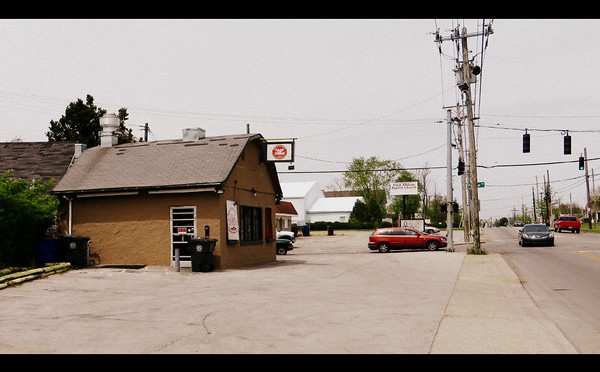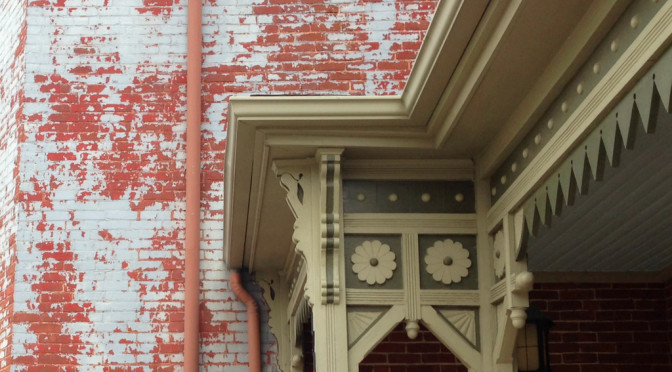Today’s walk illustrates the trauma that is sometimes involved in repairing the fabric of the city. The mess of streets here, anchored by DeRoode way, have been removed. The homes here are gone, and when I visited, little remained except stray street signs for streets that are gone forever. The streets are being torn out for the final phase of the Newtown Pike Extension (labeled as the Oliver Lewis Way Extension on the map as of today). On the balance, this road work should benefit the city, not just in terms of traffic but also in terms of this area’s capacity as it will tie it much more firmly into the rest of the city. Still, it’s a little shocking to see the real-life effects of the city planning eraser.
Tag Archives: 40508
Day 115-Price-y
Relatively narrow streets in the older neighborhood, especially along Chiles and Breathitt, provide a contrast with streets within the nearby mobile home park. Both are generally focused toward the street, that is, they seem to indicate a strong connection between the individual homes and the common areas. This path passes behind Cove Haven Cemetery. There aren’t sidewalks on this portion of Price, but traffic was light enough and there was plenty of space, so walking here doesn’t seem overwhelmingly dangerous. Price creates an odd, tenuous connection between Georgetown Road and Main Street. I think that there are more than a few people who are mystified that the Lorillard Lofts (located on Price not far from here) were not more highly desired. When leftover units went to auction in May, the Herald-Leader referred to an earlier quote by the developer who indicated that a similar property would be very desirable in a larger city, but I think this neglects the point of “urban living,” which isn’t just nominal proximity to downtown. It has to have access as well. Lofts in bigger cities, besides having a more substantial downtown core to access, almost certainly have better transportation alternatives. Price just doesn’t provide that.
Day 104-Engaging the (sixth) street
[load]
Today’s walk covered the area immediately around West Sixth Brewery and Coolalvin park. There is definitely an energy here, centered around the retail on Sixth and Jefferson. This is an older neighborhood and is outwardly focused, but not overly so. There are occasional brightly-painted houses but nothing engages the street quite the way the brewery does.
Day 100-Walk and talk
[load]
I had hoped that my 100th walk would be loaded with interesting things and valuable insights, but it didn’t exactly work out that way. While there were lots of signs of both economic trouble (vacant buildings) there were also signs of investment (construction projects, institutions that were doing fine). There were a lot of people out today, very much in line with other heavily African-American neighborhoods in the city which in general feel more outwardly more social.Day 90-Timeless
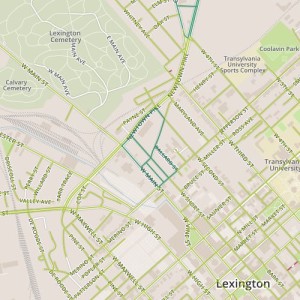 Today took me to a historic area, the Western Suburb neighborhood. I walked through most of the western portion of the area of the neighborhood. Some of the houses in this neighborhood are 200 years old while others are much more recent. My entrance into the neighborhood along Old Georgetown road began with a series of condo buildings that are less than 10 years old. Since the neighborhood is historic, there is more information available than the average neighborhood, including a list of historic buildings in the district from the neighborhood’s website.
Today took me to a historic area, the Western Suburb neighborhood. I walked through most of the western portion of the area of the neighborhood. Some of the houses in this neighborhood are 200 years old while others are much more recent. My entrance into the neighborhood along Old Georgetown road began with a series of condo buildings that are less than 10 years old. Since the neighborhood is historic, there is more information available than the average neighborhood, including a list of historic buildings in the district from the neighborhood’s website.
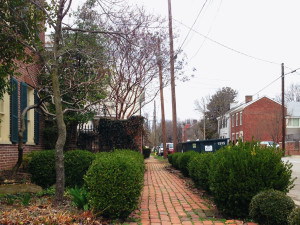
I imagine that to a certain extent, if you live in a historic district you probably have to imagine yourself as part resident, part curator. In spite of this, this area generally doesn’t feel very self conscious though in certain places it does feel curated. In any case, there are a lot of beautiful houses here and it is worth visiting.
Maybe more interesting to me was the way this neighborhood interacted with with it 21st century surroundings–the car-oriented businesses along Main, industrial property along Newtown, public housing on Second Street. Perhaps not surprisingly, the historic district feels equally impacted by its location in space as its location in history. Here are early 1800’s homes behind a gas station–this is a little jarring. It feels like a panel from R. Crumb’s “A Short History of America”. Nonetheless, this neighborhood feels vibrant and at peace with modernity in a way that many newer neighborhoods don’t.
